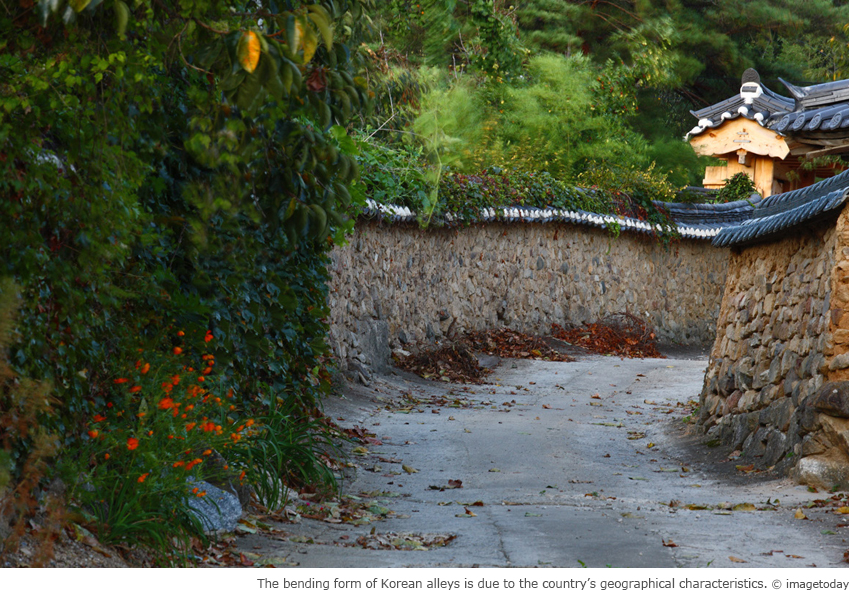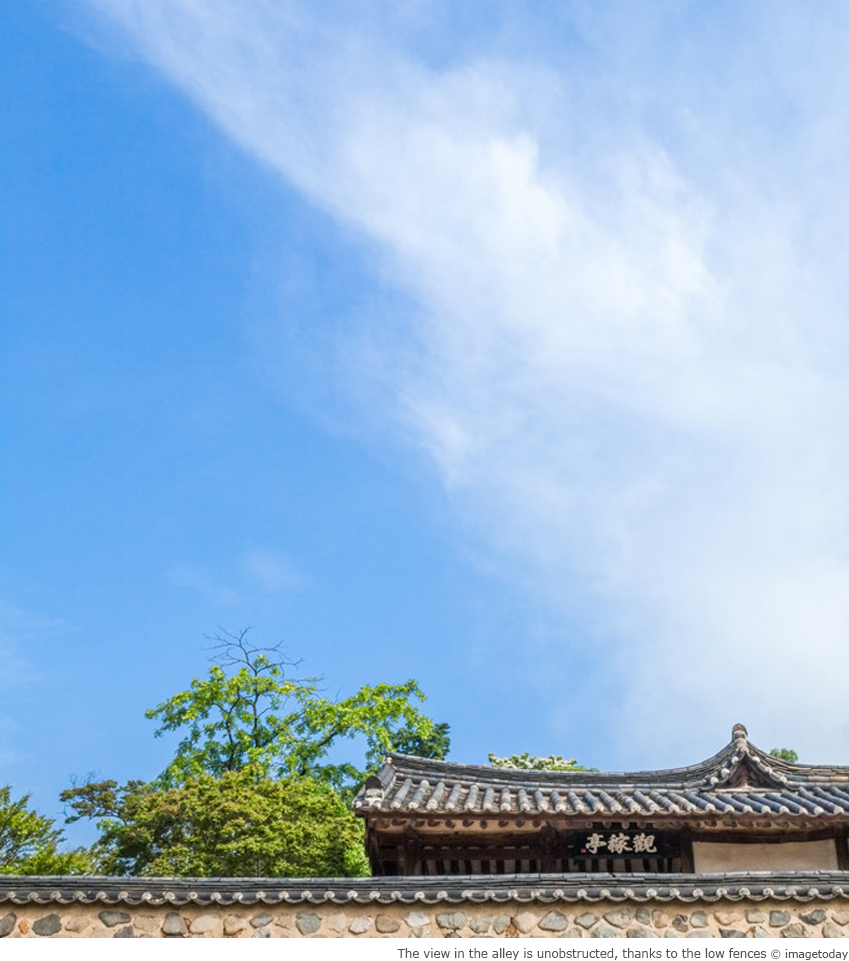

Gosat,
The Way Home
Going Against the Flow
By the Middle Ages, cities had formed in most of Western Europe. With cities, there came streets and alleys. When traced back to Roman martial traditions, the main purpose behind the construction of cities and streets was defense. On the other hand, as cities developed in Korea and elsewhere in East Asia, more of an emphasis was placed on communication.
Written by Kim Uk-joong, architect

Alleys, to Protect or Connect
Florence, Italy, is home to a myriad of streets. The first floors of buildings exist mostly as enclosed spaces, and residential areas start from the second floor. Why is this so? The buildings were designed to protect people against possible invasion. Looking down at the city, you will notice that its buildings are at least three to four floors high. The winding lanes provided more protection than straight streets, since only locals would know how to get around. Lying at the end of the maze of streets was a vast square, a typical city structure in Western Europe.
In contrast, cities in Korea and elsewhere in East Asia can be described as having streets and alleys that are “looser,” with a more open structure. A good example is the Andong Hahoe Folk Village. You can easily peer over the walls, which stand at about 1.5-meters. This is a height that allows a pretty good view. The alleys, in the form of dirt tracks, are similar to those in Western Europe in that they’re curved and winding. One difference is that this was the result of physical geography. Mountains on the Korean Peninsula cover more than 70 percent of the land. Because most villages were formed on an incline, it was difficult to make straight streets unless the land was flat. Alleyways in traditional cities in Western Europe and Korea may have similar shapes, but they are of entirely different origin.

The Cultural Sociology of Alleys
Recall the balcony scene in “Romeo and Juliet,” where Romeo is looking up at Juliet on the second floor balcony. This is consistent with the earlier description of architecture in many parts of Western Europe, with residential areas beginning from the second floor. What would it have been like for a Korean Romeo in the olden days? He would have peered over the 1.5-meters. wall, or cross over the wall, to meet the Korean Juliet of the past. The meeting would have taken place on a horizontal plane.
As you can see, Korea’s low-rise walls are both closed and open at the same time. The alleys are spaces where people interact with one another, and passersby are generally regarded as neighbors instead of enemies. Most important of all is the atmosphere, or as people call it, the ggimsae. The homely atmosphere exuding from over the walls lining an alley is not something that can be learned in the classroom.
Imagine yourself on the way home, worked up over something and ready to snap at your family. Before entering, you can sense the atmosphere from over the wall. If it’s just like any other day, you would get a steady stream of sound. If something bad has happened, the house would seem dimmer and more solemn. In case of the latter, you would try to calm yourself so as not to add fuel to the fire. The low-rise walls and alleys that outline the traditional Korean town or city play a key role in helping people to be more considerate of others, and help to instill in them a sense of community. It is through the alleys, the urban layout and the architecture that human behavior is formed. In turn, society flourishes.

Gosat, The Way Home
Gosat is an ancient word that’s not widely used these days. It refers to narrow alleys in rural villages, which used to cover most of the Korean Peninsula. The word can also be applied to the whole side street that leads from the main street to one’s front door, and to the emotions and experiences accumulated along the way. “Ah, home sweet home!” you would think to yourself, not when opening the door, but when you turn onto the side street that heads to your home. The concept of “home” extended to the alleyway and the street. Or, to be more accurate, we should say that urbanization has made it more specific and restricted nowadays, taking out the alleyway or street from the concept of “home.”
No matter how narrow or hilly a shanty town may be, it expands horizontally rather than vertically. This is intended to give a better field of vision. Standing on the stoop in front of your house, you can enjoy a view of your neighbor’s house, trees, the sky and mountains. The picturesque scene spreads unobstructed before your eyes. This is true for every house in the shanty town, planned and designed with wisdom amidst financial difficulties. From this perspective, there’s a deep, profound philosophy behind the Gosat and the pathway home. Today, however, we have set clear boundaries between “home” and “street.”
Recently, I integrated Gosat as a feature into one of my new building designs. Gosat, as it existed in the past, would only work if one lived surrounded by good neighbors. So I decided to build it inside the house as a 15-meter. winding path. I hoped that this modern interpretation of a traditional Gosat would serve as a reminder of the cultural and social values handed down by our ancestors.

Going Against the Flow
As an architect, I hope that houses I design go against the flow of recent trends. The world is changing constantly, at a faster pace than before, and the path home is getting shorter by the day. The philosophy of Gosat -- taking things slow when it’s time to do so -- is worth preserving. When you see an enemy approaching from the other side of the street, tucking yourself away in a corner and waiting for a better time to negotiate can be more effective than outright confrontation. Nowadays, if you see a hostile neighbor, all you can do is opt for the stairs to avoid taking the same elevator.
The truth of life does not lie in appearances. Even if you imitate appearances, inherent values cannot be replicated. What’s more important is the way of life, and this is the key to delivering genuine value. Various alleyway renewal projects have been successful because they restored human warmth. Even though the Gosat pathways are vanishing from our lives, we can try all the same to practice the values for which they once stood. After all, the quirks of this oddball architect resulted in a Gosat being built inside a house.
Other Articles




Odaesan Mountain,
Pyeongchang’s Treasure

Hooked on Hangeul

Designed To Be ‘Held’


Eomuk Fishcakes


With Culture N Tickets
Application of subscription
Sign upThe event winners
Go






